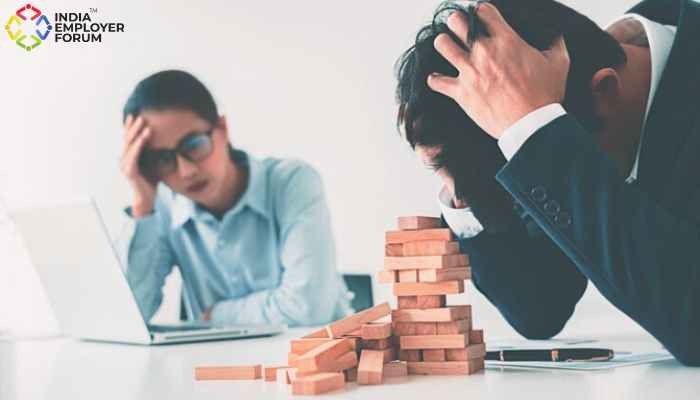Humans are prone to secondhand stress because of innate tendency to sympathize with their fellow beings. This natural trait is further reinforced by conditioning. Empathy runs very deep within the human psyche and the effects of stress faced show up on people surrounding the principal sufferer even before they realize it. The very gregarious nature of human civilization is called into question when one seeks to avoid secondhand stress.
The answer to secondhand stress is not to distance oneself from other sufferers but to solve stressors together. The collective strength of the humans who come together means positives can be recalled and highlighted. The memory of such positivity is potent and has mileage when the going is not as good. Working professionals going through stress – failure at a project, lasting underperformance, or dissatisfaction at the workplace – can find their burdens quickly becoming all-encompassing. They lose their ability to recall the good times. The people closest to them can be their biggest anchors and support if they do not become party to secondhand stress themselves. Luckily, where the principal sufferer loses perspective, others may not. They can help each other get over a low period.
You might also be interested to read: Prevent Employee Burnout By Creating A Bridge Between Isolation And Partnership
Arming working professionals against secondhand stress is the surest way of equipping entire teams to deal with the inevitable highs and lows of work life.
Recognize: Team-mates and business associates find themselves picking up on stress through words, gestures, heated exchanges, or lonesome vigils that one of them keeps. A story, an anecdote, a memo, even a phone call – anything from a workday can become a potential trigger to secondhand stress. Reminding people of how to recognize stress can save a lot of the snowballing effect that stress has.
Relate instead of prod: Drawing a conversation on uncomfortable emotions and experiences isn’t easy. The manager has to take the lead by sharing their experience freely so that the give and take feel natural. If someone feels interrogated, honesty takes a nosedive and the best intent may not help. Instead, open-ended questions such as, “What’s going right?” “What would you change if given a chance” give a look-see into what the person is really feeling.
Come together: Human nature is to thrive under the recognition that people are together in the good and bad they go through. This is why it is of exceeding importance to not single out a sufferer – neither the principal sufferer of stress nor the ones who feel it by extension. Shaming only prolongs the problem and obscures the path toward resolution.
Encourage sharing: Collaboration and working together have changed in the pandemic. People are quite literally “socially distanced” and can’t compare notes or cool their heels at the water cooler. When communication gets hit by this increase of non-verbal inputs and the major missing factor of in-person interaction, sharing becomes harder. Some find that stress dissipates when shared out in the open, and the sufferer gets to hear a multitude of approaches about how each of the others handled it. This puts solutions in a new, hopeful light. Where one only heard problems before, solutions get the focus when this is done.
Both cynosures of stressed exchanges and their peers on the fringes feel that they are in the eye of the storm. Planting a solution means helping these players realize that they can be part of the solution (and not the conflict itself) by highlighting positives. This environment helps them attain a less-stressed, more bearable state in time. The organic way is the only lasting way to handle secondhand stress.
Reference: How to Cope with Secondhand Stress|Rebecca Knight|Harvard Business Review|October 04, 2018
You might also be interested to read:




